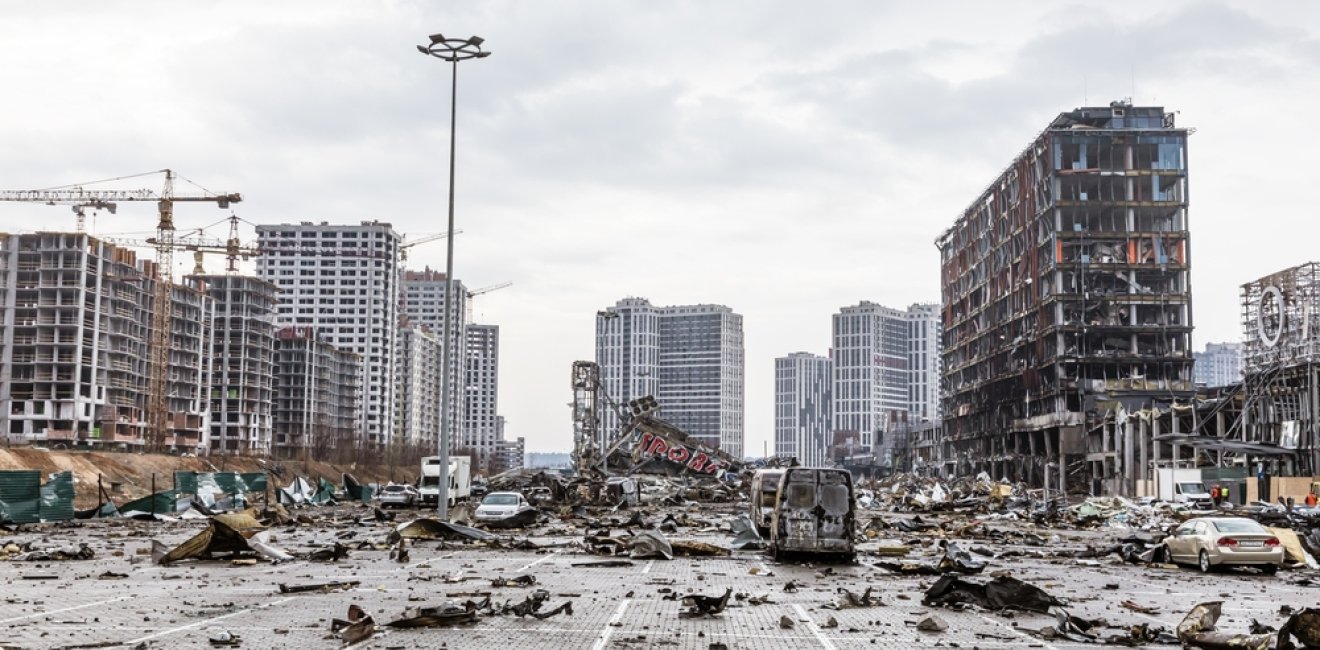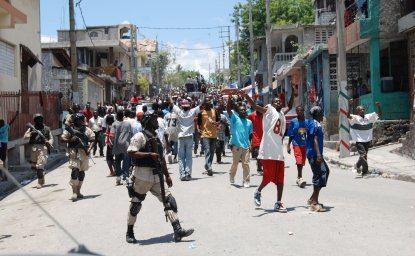War is a destroyer of lives and livelihoods. It is also a destroyer of economic assets, critical infrastructure, and the entire national economy of the state that falls prey to armed aggression. Russia’s war against Ukraine has already caused hundreds of billions of dollars in damages. How to make Russian pay reparations for the destruction it continues to inflict is one of the key questions about this war and its conclusion, with consequences not only for Ukraine’s economic future but for the entire system of international justice.
Today, Ukraine requires substantial international assistance just to stay afloat. In 2024 alone, $15 billion is needed for urgent reconstruction and recovery efforts, according to Ukrainian government estimates. The country's 2024 budget allocates nearly $40 billion, roughly half of its total outlays, to defense, primarily funded from tax revenues. This leaves a substantial bill of around $40 billion to fund the remainder of the state expenditures, including social security transfers and the healthcare system. According to the International Monetary Fund, Ukraine requires at least $37 billion in external support this year, most of which would come from the European Union (EU) and the United States.
In the long run, according to Rapid Damage and Needs Assessment (RDNA3) released by the Government of Ukraine, the World Bank Group, the European Commission, and the United Nations, as of 31 December 2023 the total cost of reconstruction and recovery in Ukraine amounts to $486 billion.
Today, Ukraine’s immediate financial needs are covered by the aid of partner countries, who are voluntarily shouldering this burden. Ultimately, however, international law, morality, and common sense demand that the aggressor state – Russia – be made financially responsible for the damages it causes in Ukraine. Some $300 billion in Russian sovereign financial assets, deposited in Western financial institutions when the war started, have been frozen as a result of Western sanctions. While this money is no longer available to Russia, its future fate remains unsettled and the question of how to legally seize these funds and repurpose them for Ukraine remains open.
A Case for Confiscation and Counterarguments
Basic principle of restorative justice requires that damage be compensated at the expense of the one who caused it. It works on the level of relations between private parties in tort law. It is declared in international law as well (see Articles on the Responsibility of States for Internationally Wrongful Acts, Art 31), but its practical implementation on the level of interstate relations is having hard times.
In tort law the obligation to repair inflicted damage is imposed on the tortfeasor whether he wants it or not. Yet the international community hesitates to recognize that this equally applies to a State that commits internationally wrongful acts. One consideration often pleaded by those who oppose the idea of confiscating frozen Russian money is the principle of inviolability of property rights and the doctrine of sovereign immunity. But this sentiment effectively means prioritizing aggressor’s rights over the rights of its victims. The Western World’s loyalty to the ideals of the rule of law should not make cost Ukraine in the face of an existential threat.
Undoubtedly, no one, governments included, should be arbitrarily deprived of their possessions. This principle, however, though fundamental, is not without exceptions. One exception is concerned with the doctrine of countermeasures in international law. This doctrine permits actions that would otherwise violate international law, such as sanctions and assets seizures, provided that such actions are taken to induce another state to restore compliance with international law.
Sovereign immunity, meanwhile, is a procedural safeguard that shields a state from court proceedings in foreign jurisdiction but does not preclude non-judicial actions by the parliament, government, or president of a foreign country. Therefore, upon careful examination, the international law does allow limitations of property rights in a case scenario like the Russia’s war in Ukraine.
The other concern is that transferring Russian money would set a dangerous precedent by making confiscation of foreign governments’ assets the new normal. But a failure to confiscate Russian money would set a much more dangerous precedent: showing potential aggressors that they can get what they want by force and still retain their assets. Confiscation of the Russian assets, on the contrary, would serve as a deterrent against future acts of aggression and prove that international law is operative and not just a set of doctrines lying dormant, irrelevant in critical moments of history.
The other counterargument revolves around the impact of confiscation of Russian frozen assets on the reliability of the euro and the US dollar as main reserve currencies. Yet, experts argue that freezing Russian sovereign assets has had its most significant impact on financial markets already, and further measures are unlikely to yield greater effects. Moreover, the lack of comparable alternatives to the euro and the US dollar makes it challenging to break away from these major currencies. While the Chinese yuan is a potential contender, concerns about political risks associated with investing in a country with questionable legal practices dampen its appeal as an alternative currency.
Fear of retaliation from Russia plays a role in hesitation to confiscate Russian money as well. Indeed, Russia has already made its move, trying to fight back. Moscow has taken control over Western companies, such as Carlsberg, DANONE, FORTUM, FRAPORT, UNIPER, and others. It is inevitable that the aggressor will try to resist the pressure and retaliate. But if Russia wins, Western economies might lose much more in all domains, including financially.
There will most certainly be a legal pushback from Russia as well. It is not surprising that the state that disregards the rule of law the most is fast to invoke it when it suits its interests. As of February 2024, Russian organizations have filed 94 lawsuits against Euroclear, the repository that holds the majority of Russian assets, approximately $200 billion, demanding the return of the funds.
So far, most of the litigation has occurred in Russian courts. However, since sanctions have been imposed by international and foreign institutions, Russian courts do not have jurisdiction to decide the legitimacy of the restrictive measures imposed.
Alternatives to confiscation of the principal
The above-mentioned concerns have led to a number of options allegedly fashioning a compromise. These include: (1) transfer of the proceeds (but not the principal) from the frozen assets to Ukraine; (2) transfer of taxes charged on the proceeds; (3) using the assets or proceeds as collateral for a loan.
The main objection to all these options is that they all fall short of furnishing Ukraine with the necessary funds for its survival, let alone the amount required for reconstruction or providing reparations to war victims.
Thus, in 2023, the total proceeds from the reinvestment of frozen Russian assets by Euroclear amounted to €4.4 billion, a sum that only cover a quarter of the money needed for urgent reconstruction in 2024 alone. Indeed, not even the whole principal of frozen Russian assets, the $300 billion, is sufficient to cover all the damage caused by Russia. Therefore, the only option that warrants the sum comparable (though not equal) to the damage caused is the confiscation of the principal and the proceeds together.
The US perspective
Of Russia’s $300 billion frozen worldwide only a small portion, about $5 billion, is in the United States. The largest portion of Russian money is located in Brussels, Belgium, held by Euroclear. This does not obliviate the need for a concerted international action to mete out justice. The more countries enforcing the decision to allocate Russian frozen money to reparations, the more legitimacy this decision garners in the face of the international community and international law.
One of the major breakthroughs in this regard occurred in the US Congress with the adoption of “21st Century Peace Through Strength Act” which became the first significant step toward repurposing Russian money. This act stipulated a political “yes” to the seizure, yet avoids the practical “when.”
The bill not provide for an immediate confiscation of the Russian assets but confirms the authority of the US president to do so. The essence is that “any effort by the United States to confiscate and repurpose Russian sovereign assets should be undertaken alongside international allies and partners as part of a coordinated, multilateral effort, including with G7 countries, the European Union, Australia, and other countries in which Russian sovereign assets are located.”
Some experts, however, (see Renew Democracy Initiative Report) believe that the President already has the authority to transfer Russian assets under subsection B of the International Emergency Economic Powers Act (IEEPA) even without amending the legislation.
Moreover, there are historical precedents when IEEPA was utilized to confiscate assets of the state violating international law. For example, in 1992, after Iraq invaded Kuwait, President George H.W. Bush froze Iraqi assets and then transferred them to the Federal Reserve Bank of New York; eventually the money was sent to the UN Compensation Commission, to compensate the victims of Iraqi aggression.
However, the adoption of the 21st Century Peace Through Strength Act is aimed at dissolving all doubts about the powers of the US president to “seize, confiscate, transfer, or vest any Russian aggressor state sovereign assets.”
Moreover, newly adopted US law stipulates that the United State “should” (a recommendation in legalese), not “shall” (an obligation), wait for the rest of the partners. The United States is not the first country to pass a law on the confiscation of frozen Russian assets. However, it may be the first to demonstrate how to do so. This step has the potential to spur the EU toward more decisive action, while also providing countries like the UK, Japan, and Canada with a tangible precedent to expedite the shift from words to deeds.
Conclusion
The imperative for Russia to compensate Ukraine for the war damage is undeniable. To enforce this obligation, utilizing frozen Russian assets emerges as a viable option, sanctioned under international contract law within the doctrine of countermeasures. While alternative measures may offer temporary relief, they fall short of providing the comprehensive solution needed to address the magnitude of the damage inflicted. Therefore, leveraging frozen funds represents a necessary step toward holding Russia accountable and ensuring justice for Ukraine. If international justice is to mean anything, it is imperative to prioritize the interests of those affected and pursue avenues that offer meaningful and lasting restitution.
Author


Global Europe Program
The Global Europe Program is focused on Europe’s capabilities, and how it engages on critical global issues. We investigate European approaches to critical global issues. We examine Europe’s relations with Russia and Eurasia, China and the Indo-Pacific, the Middle East and Africa. Our initiatives include “Ukraine in Europe”—an examination of what it will take to make Ukraine’s European future a reality. But we also examine the role of NATO, the European Union and the OSCE, Europe’s energy security, transatlantic trade disputes, and challenges to democracy. The Global Europe Program’s staff, scholars-in-residence, and Global Fellows participate in seminars, policy study groups, and international conferences to provide analytical recommendations to policy makers and the media. Read more





